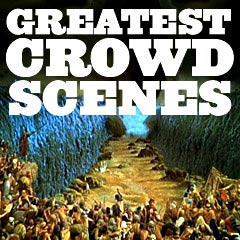
|
Film Scenes Part 1 |
|
|
|||||
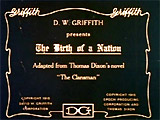
|
This controversial D.W. Griffith Civil War epic contained many examples of crowd scenes, including the ride of the white-sheeted KKK to the rescue of imperiled whites, and numerous Civil War battle scenes. |
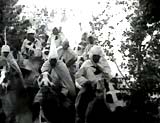 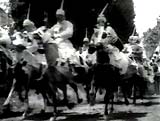 
|
|||
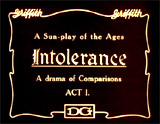
|
Another D.W. Griffith epic, with a massive and colossal reconstruction of ancient Babylonia - a set piece including a cast with thousands of extras. It was the largest, most elaborate exterior set built for any movie at the time. |
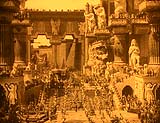
|
|||
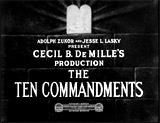
|
The Ten Commandments (1923) Cecil B. De Mille's first rendition (silent) of the tale of Moses featured major crowd scenes, with over 3,500 extras. The film also featured the massively built set of The City of the Pharaoh, which was 120 feet high and 720 feet wide, and weighed 1,000,000 pounds. DeMille had the set dismantled and buried along a stretch of California's central coast, and it remained so for 60 years. |
 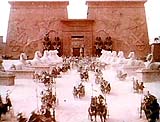 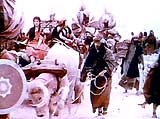
|
|||
  |
Battleship Potemkin (1925, USSR) and Oktyabr (1928, USSR) Sergei Eisenstein's films featured large crowd riot scenes, including the famous Odessa Steps Sequence (pictured) in Battleship Potemkin (1925), and the 1917 Bolshevik Revolution in Oktober (1928) aka Ten Days That Shook the World. |
 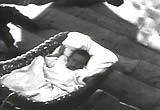
|
|||
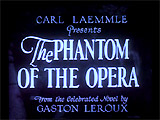
|
The Phantom of the Opera (1925) With large-scale crowd scenes in the opulent Opera House. |
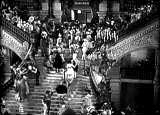
|
|||
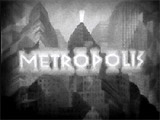
|
This Fritz Lang early sci-fi film required vast casts of extras - almost 38,000 performers, including 1,000 men (FX-multiplied by six) with their heads shaved for the Tower of Babel sequence. Other huge crowd scenes with underground workers included the view of the despairing and exhausting workers going to work in robotic unison as they shuffled forward to elevators, and the android imposter Maria (Brigitte Helm) inspiring the workers to riot. |
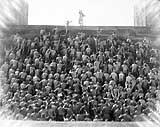 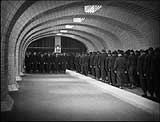 
|
|||
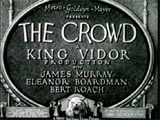
|
One of the greatest impressionistic tracking shots in all of cinematic history was in this film - the majestic shot began at the crowded street level in NYC and tilted upward and smoothly traveled up the flat outside surface of the stone wall of a multi-windowed skyscraper - one of many in the city. Suddenly, the office building rose and straightened up outside one floor, and transported the viewer directly into one of its windows. In a dissolve, the camera slid through the window into a large room filled with a monotonous criss-crossing of hundreds of rows of identical office desks and workers. The camera swept across the infinite sea of anonymous, business-attired insurance company paper-pushers until it zoomed in on our hero - one of many wage-slaves seated amidst hundreds of other obedient and cowed clerks. Another faceless victim of the city, John Sims' (James Murray) desk is labeled (in closeup): "John Sims 137." |
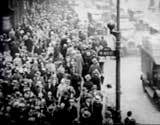 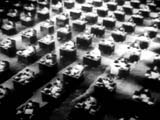 
|
|||
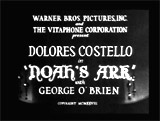
|
Noah's Ark (1928) This Michael Curtiz-directed disaster film from Warner Bros. (first released as a silent film and then part-talkie) featured numerous crowd scenes during the flashback sequences to Biblical times. During the filming of the climactic flood scene brought on by Jehovah when the temple collapsed by lightning bolts from a huge rainstorm, large volumes of water drowned three extras and injured numerous others. |
  
|
|||

|
The Big House (1930) This tough and realistic prison film required large numbers of cast members to play the anonymous convicts, locked up in their cells and forced to march from their cellblocks like robots. The film's highlight (the last 15 minutes) included a Thanksgiving-time jailbreak by masses of angry prisoners, and required large numbers of inmates to convincingly portray the violent revolt. |

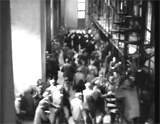
|
|||
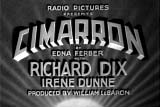
|
Cimarron (1931) A Best Picture winner and early sound Western - with a spectacular re-enactment of the Oklahoma Land Rush in 1889, with 47 camera operators and 5,000 dress extras. |
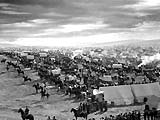 
|
|||
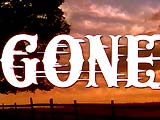
|
With the celebrated scene of wounded Confederate soldiers at the make-shift train station hospital, laid out (with dummies to fill out the numbers) in rows. |
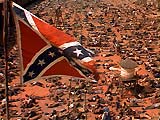
|
|||
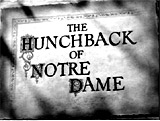
|
The Hunchback of Notre Dame (1939) William Dieterle masterfully handled many sweeping crowd scenes outside Notre Dame Cathedral, with the military processions, the "King of Fools" celebration, and the daring rescue of condemned-to-die gypsy Esmeralda (Maureen O'Hara) on a gallows in front of a massive crowd by deformed bellringer Quasimodo (Charles Laughton). |
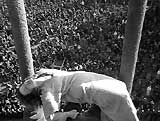
|
|||
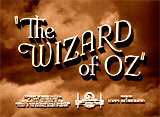
|
This film featured the Munchkin crowd scene, singing Ding Dong the Witch is Dead and You're Off to See the Wizard; and the crowded send-off for the Wizard-piloted balloon in the Emerald City. |

|
|||
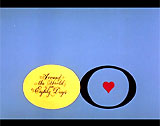
|
Around the World in 80 Days (1956) This dubious Best Picture winner of 1956 starred David Niven as eccentric traveler Phileas Fogg, and was based on the famous 1872 escapist adventure book by Jules Verne. It was the largest scale film ever made - created with Todd-AO, a special wide-screen format. The film featured almost 69,000 extras and thousands of animals including sheep, buffalo, donkeys, horses, monkeys, bulls, elephants, skunks, and ostriches! The film also used 140 sets built at six Hollywood studios (as well as on location shoots in England, Hong Kong and Japan) and featured the largest guest star cast of all time, including dozens of stars in various roles. |
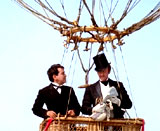
|
|||

|
With many crowd sequences including:
|
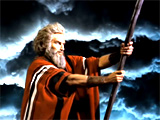 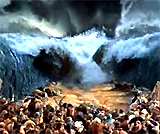
|
|||
(chronological, by film title) Introduction | Part 1 | Part 2 |